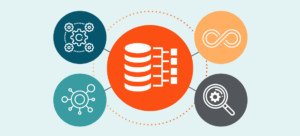
74% of global CIOs have a data lakehouse in their technology stack, with nearly all others planning to implement one within the next three years, according to Databricks. And it’s no wonder adoption is accelerating; modern data architecture is a necessity in the AI race. So, if your data platform can’t match your AI ambitions, you’re already behind.
Data demands have changed, and traditional platforms can’t keep up.
AI and real-time analytics demands are redefining what enterprise data platforms must deliver. And failing to modernize puts you at a disadvantage. While you’re using systems built to answer questions like, “What happened last quarter?” your competition is using AI, machine learning and real-time applications to flip the script. They’ve advanced to asking, “What’s happening right now?” and, more importantly, “What will happen next?”
To keep up, your platform needs to:
- Ingest structured, semi-structured and unstructured data
- Support continuous, real-time feedback loops
- Serve insights to both humans and machines
- Enable scalable, cost-effective machine learning at production levels
- And do it all without falling apart
That’s where data lakehouse benefits shine, going beyond what a data warehouse or data lake can deliver.
Traditional data warehouses can’t meet AI’s agility needs.
Enterprise data warehouses were built for a different world, one where the primary use case was clean, structured data feeding dashboards and reports. And they’re still fine for that.
But data demands have evolved beyond the limitations of traditional warehouses, which:
- Require rigid schemas, making it hard to meet modern data needs
- Support structured formats but struggle with logs, images, PDFs and audio
- Increase costs, as they’re expensive to scale, especially when handling AI/ML workloads
- Fail to support real-time use cases natively
Data lakes aren’t the full answer, either.
Data lakes offered a course correction: flexible storage for all types of data, including unstructured formats. They’re great for capturing raw data at scale. But on their own, they lack the governance, performance and query optimization needed for enterprise-grade analytics and ML.
So, what’s the answer to all these challenges? Data lakehouses.
Data lakehouses explained
A data lakehouse is an architecture that combines the flexibility of a data lake with the governance of a data warehouse. Like a lake, it supports raw, unstructured and semi-structured data. Like a warehouse, it supports ACID transactions, schema enforcement and fast SQL queries. While data lakes are great for storage, they’re chaotic and not so great for insights. Data warehouses are fast and clean, but expensive and rigid. The data lakehouse solves these problems, providing the pros of each, without the cons, making it an increasingly popular option.
Why are enterprises moving to lakehouses now?
Simply put, data lakehouses are built for today’s data demands. By unifying the scalability of data lakes with the performance and reliability of data warehouses, data lakes eliminate the need for separate systems. This convergence reduces costs, simplifies data architecture and better supports AI and analytics at scale. But shifting to a data lakehouse isn’t just about dumping data into a new container.
Platform readiness: It’s not just about storage
It’s a mindset shift. Your platform becomes an enabler of AI, not just a reporter of history. But you don’t need a massive, complex platform built for a tech giant. You’re not Google and that’s okay. What you do need is flexibility. Because you live in the real world where legacy systems, mixed workloads, a patchwork of pipelines and data sprawl are the norm. It won’t be as clean as migrating to Databricks in a quarter. And that’s also okay because lakehouse adoption isn’t about purity. It’s about gaining flexibility and laying the groundwork for your future AI initiatives.
You can take a hybrid approach with a plan that’s layered for evolution and still see data lakehouse benefits. You can continue using your warehouse for finance reports. But you also need a platform that supports where your business is headed; not just where it’s been. Lakehouses give you a path for growth without a full rip-and-replace. They let you add capabilities over time, so you can modernize your architecture at your own pace while building the scalable, unified data foundation AI demands.
Why data lakehouse benefits make sense for AI
AI doesn’t just need data; it needs the right data, in the right shape, at the right time. That’s a tough ask for platforms designed around batch processing, static tables and overnight ETL. Lakehouses, by contrast, are built to meet the demands of modern AI, combining flexible data ingestion with real-time access and intelligent architecture.
Lakehouses ingest structured, semi-structured and unstructured data without forcing rigid schema assumptions up front. They support semantic clarity, so models aren’t built on conflicting or vague inputs. Combined with built-in data lineage, teams can trace where data came from and how it was transformed, which helps speed model training, reduce rework and ensure trust in the output.
Just as important, lakehouses unify storage, processing and analytics in one architecture. This eliminates the duplication, brittle pipelines and fragile integrations common in stitched-together systems. The result: consistent, governed, up-to-date data that’s ready for AI.
To put it in perspective, look at Databricks versus traditional SQL Server. It’s not even a fair fight. A modern lakehouse like Databricks supports streaming data, notebooks, Delta Lake transactions, MLflow pipelines and Spark-native processing, all in one place. SQL Server? Great for accounting. Not great for deploying a model that retrains on user behavior every hour. And that’s not to say you throw out SQL, but you need to augment it with a platform that’s built for AI at scale.
Platforms in play: Where the major players stand
The data architecture landscape is crowded, but a few dominant platforms are shaping how enterprises manage and analyze data, each with their own tradeoffs.
Snowflake: Excellent for SQL-based analytics. Strong on security, but weaker on unstructured data and native ML workflows.
Databricks: Built for ML. Strong lakehouse foundation. Best suited for teams with deep engineering chops.
BigQuery: Serverless scaling is a plus. Fast and flexible for analytics, though ML tools can be bolt-on.
Microsoft Fabric: Early but promising. Anecdotally praised for ease of use, but integration complexity is real.
AWS stack (S3 + Glue + Redshift + SageMaker): Powerful but fragmented. Requires orchestration and expertise to tie together.
The key issue, though, is how well these platforms will support semantic modeling, lineage and real-time AI observability. That’s what will separate future-ready architectures from ones that just look modern on paper.
Why leaders should care about data lakehouse benefits now
You might not be deploying AI copilots this quarter. But platform decisions made today will define what you can deploy next year. Lakehouse maturity is climbing quickly. And the organizations moving now? They’ll have hardened platforms when the next wave of AI demands hits, not brittle pipelines added to legacy BI tools.
But don’t fall for the “just move it to the lakehouse” trap. There’s a temptation to treat lakehouse migrations like a data lake project. Lakehouses require intentional modeling, governance and pipeline design from day one.
To ensure your lakehouse investment delivers lasting value to power smarter decisions, more accurate models and faster time to insight, these best practices can help:
Plan for unstructured data: PDFs, chat transcripts and IoT feeds aren’t edge cases anymore. Lakehouses are built to handle them, but only if you intentionally design your architecture to support diverse data types from the start.
Modernize your data pipelines: AI and analytics workflows evolve quickly. Instead of relying on brittle, one-way ETL chains, adopt modular pipelines that support observability, version control and rapid iteration.
Establish a semantic layer: Consistent definitions, like what qualifies as a “customer” or a “product,” are essential for accurate insights. Without a shared understanding, even the most advanced AI can go off track.
Focus on fundamentals, not just features: Tools and platforms are important, but they’re only as effective as the data strategy behind them. Prioritize governance, modeling and observability over chasing the latest product capabilities.
Data lakehouse benefits can accelerate progress, but it’s your architecture that determines success. A well-designed lakehouse won’t just support your strategy; it’ll amplify it.
Conclusion
The lakehouse isn’t a trend; it’s a foundation. AI has made the limits of yesterday’s data platforms clear. And the answer is modernization, as data lakehouse benefits are real: unified architecture, flexible storage, native support for AI and ML along with streamlined governance. But you need to plan carefully. Don’t just migrate data. Design with future use cases in mind. Because you’re not just building a platform. You’re building the next decade of innovation.



